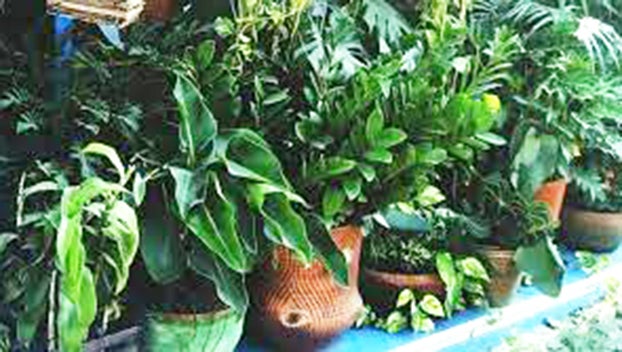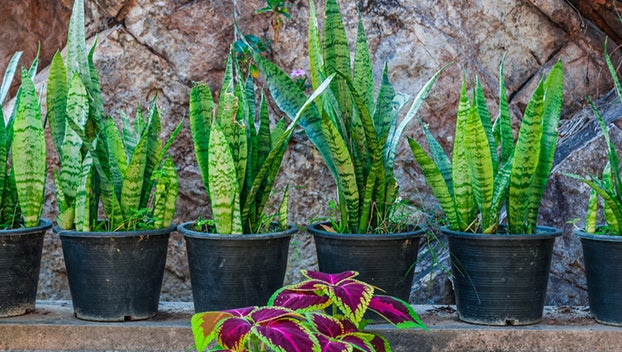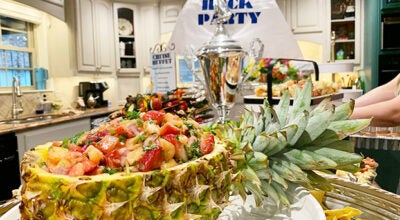MASTER GARDENER — Time to relocate houseplants with Spring migration
Published 12:02 am Wednesday, March 29, 2023

- Migrating houseplant collections for many gardeners and plant enthusiasts outdoors for spring and summer months is either an overwhelming chore or a labor of love dependent on the size of the collection and ones’ perspective. (Image courtesy backyardboss.com)
|
Getting your Trinity Audio player ready...
|
Gardeners, spring is here, newly arrived and what a welcome respite, as winter seemed to linger much too long.
This week’s discussion is what I call the Great Migration. Yes, that means it’s time to relocate, houseplants from indoors to outdoor areas, which are protected from the blistering sun.
Before moving houseplants outdoors, closely inspect each plant for powdery mildew, mites, white flies and other pests that have decided to overwinter indoors, snacking on your “captive audience.”
Once discovered, these marauders can be killed with a quick spray of an insecticidal soap solution, though it could take a couple of spray applications, make certain to follow the manufacturer’s directions printed on the label.
Remove diseased stems, yellowed or brown leaves and water thoroughly. Plants that are top-heavy “leggy,” fill their container, or no longer look attractive need focused care and attention.
So, gardeners, it’s time to “Spring” into action (pun intended…I couldn’t help myself) as spring is a good time to repot houseplants before relocating them outdoors.
Begin by selecting a new container that’s one size larger than the plant’s current pot unless you plan to divide the plant.
Now for the fun part, which is to remove the plant from the existing container, so make certain to water the plant thoroughly before attempting to remove it, otherwise the plant roots, stems and foliage will be damaged.
The amount of force necessary to remove root-bound plants from pots can destroy plants where roots are separated from stems and leaves…not a good thing (I’m speaking from numerous personal experiences).
Gently pull the plants base and remove the root ball from the container by rolling and tapping the container. Once removed, inspect the root ball for damaged or diseased roots, and using a sharp knife or hand pruners (disinfected with isopropyl alcohol), remove damaged areas.
Where roots are grossly tangled, gently “tease” apart sections using your fingers as claws, untangling the roots slowly. Repot the untangled root ball into fresh houseplant potting soil and water the plant thoroughly.
Every year, well-intentioned gardeners choose to move houseplants and return overwintering tropical plants outside for the warmer months (me included).
Unfortunately, an immense number of houseplants will suffer from the intense, and often dire effects from too much sunlight. Transitioning a houseplant from dimly lit areas within our homes to intense, extremely bright sunlight causes sunscald or severe leaf burn.
The direct sunlight overwhelms chlorophyll in plant leaves causing the leaf temperature to rapidly increase and overheat (a plants version of sun burn-ouch)!
One hour of direct sunlight can cause extreme leaf damage that could take a plant many months to recover.

Spring is a great time to divide houseplants that have outgrown their pots. Sansevieria (Mother-in-law’s tongue) are easily divided by separating the root ball when transplanting to larger pots. (Image courtesy of ruralsprout.com)
Use these tips to allow houseplants to survive the great migration:
Provide Them Shade (The Good Kind) – many indoor plants prefer bright light, not direct sunlight, so it’s in the best interest of plants when moving them outdoors to position them underneath the canopy of a tree or beneath a large shrub.
They can often remain in place, in these shady areas until fall and usually perform well. Even sun-loving plants such as cacti, Bird-of-Paradise and Fiddle-leaf fig, need to be moved into a shady spots initially, then slowly transitioned to more brightly lit areas over time.
Remember the most intense sunlight level occurs between the hours of 10 a.m. to 4 p.m. Plant enthusiasts and gardeners alike will want to limit houseplants’ midday sunlight exposure to protect plants from sunburn.
Protected Areas (Porches and Patios) – numerous Extension horticulturists recommend placing houseplants on porches and patios during the summer months, since these areas can provide bright light, though care must be taken not to place plants with exposure to direct sunlight.
Gardeners note that each time any plant is moved, it will require an acclimatization period, and often changes may become evident.
While plants adjust to a new location, leaves might yellow or lighten, partially folding. Typically, once adjusted to their new environment, leaves return to normal green hues.
Once houseplants have adjusted to their new ‘digs’ and light intensity, it’s time to provide them with additional food and begin a fertilization program using organic or water soluble fertilizers of choice, naturally following the manufactures guidelines and labeled instructions.
Remember less is more when it comes to fertilizing plants and overfertilizing any plant is to the detriment of our environment!
Provide them Drinks – water plants often and as needed, the majority of container grown plants do best if the soil is allowed to become slightly dry before watering, then water thoroughly until water runs from the pots drain holes. Once summer arrives most container plants require daily watering or a least every other day, since you don’t want to allow plants to become stressed or wilted before watering.
So long for now fellow gardeners, let’s go out and grow ourselves a greener, more sustainable world, one plant at a time!
John Green is Texas Certified Master Gardener with Orange County Master Gardeners. To have gardening questions answered in detail, contact him at jongreene57@gmail.com, reach out to Orange County Master Gardeners Helpline at 409-882-7010 or visit https://txmg.org/orange, Facebook: Orange County Texas Master Gardeners Association or by email extension@co.orange.tx.us.





